Research shows that termites invade close to 600,000 homes in the U.S. It was also discovered that the infestation costs homeowners approximately $5 billion in termite control and structural damage.
If you end up moving into a new home with a termite infestation, you could spend about $8,000 on repairs and extermination. Buying a new house can be exciting until you discover a termite problem.
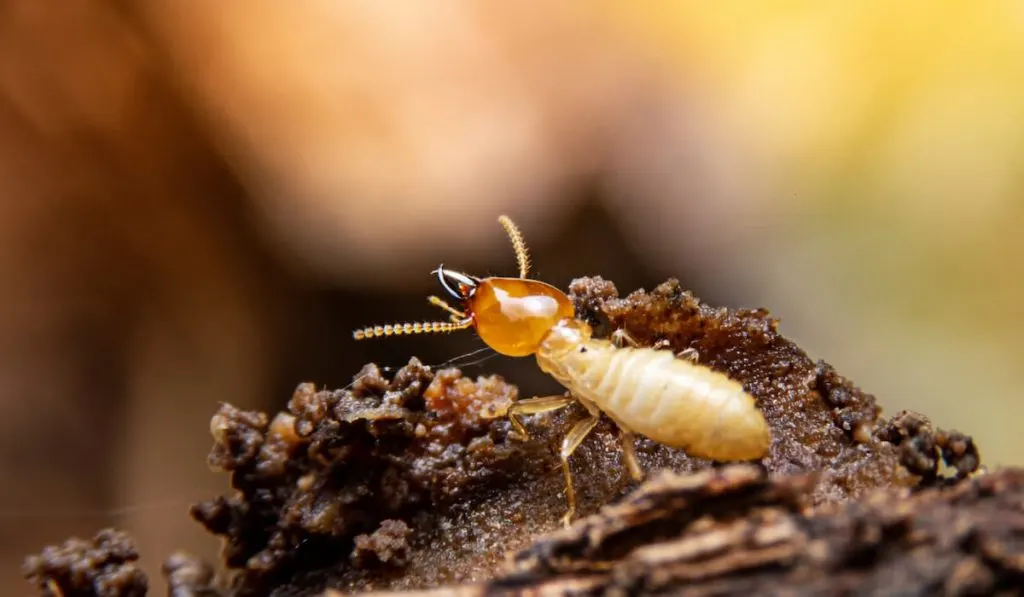
Read on to find out if new houses can have termites and what measures to take if you’ve already closed on the house.
Is It Possible to Have Termites in a New Construction?
Yes, new construction can have a termite infestation. Contrary to the widely held belief that termites feed on old buildings, it’s possible to still find termites in a new home. They can consume new foundations and wooden studs.
What Causes an Infestation in a New Construction?
Different factors can cause an infestation. They include:
Type of Soil and Ground Around the Construction
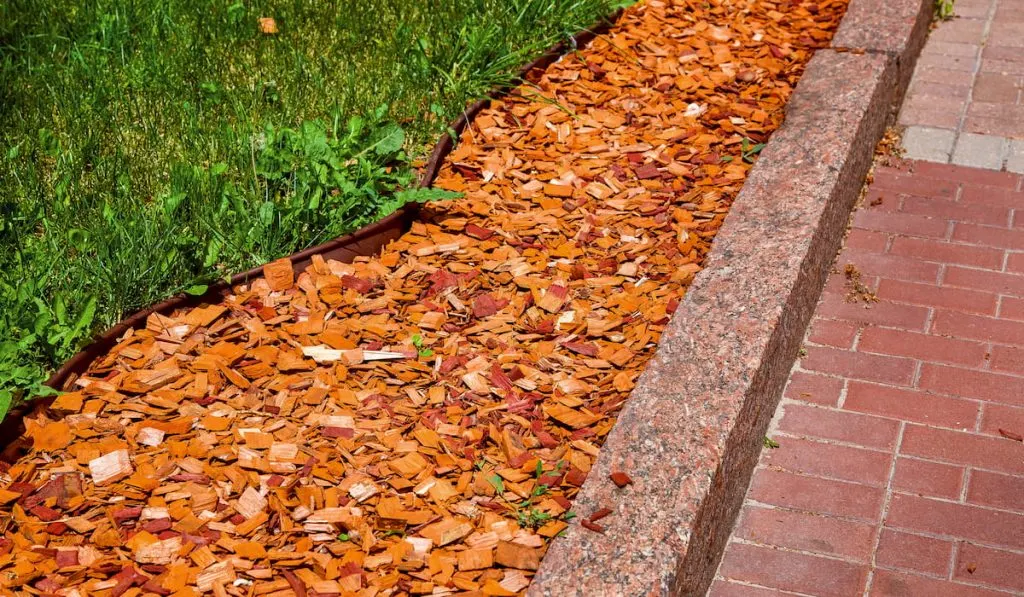
Although you may have used the right type of wood in construction, sometimes the type of soil or ground around the construction can also lead to an infestation.
Wood-based mulches can have termites in the wood pieces. Spreading the mulch around a new home means the termites will leave the mulch and get onto the wood of the new house and cause damage.
Wood Ground Contact
It’s also possible for an infestation to occur if the wood of the house is in contact with the surrounding soil or ground. A contractor may take all the necessary measures to ensure everything is all right, but close contact with the ground can cause a termite problem in a new home.
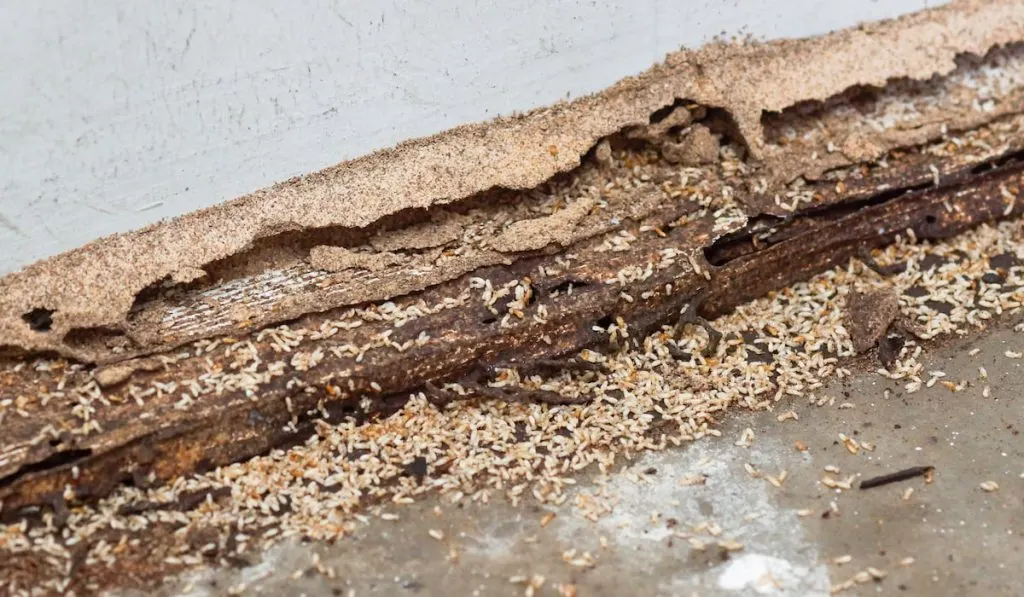
Exposing the Frame for Too Long
Sometimes builders leave an almost complete project and go to other jobs. Unfortunately, leaving a framed house exposed to external elements for a long period could lead to wood rot.
In such a case, you need to ask when the construction started to find out if the framing was exposed and for how long.
Poor Structural Integrity
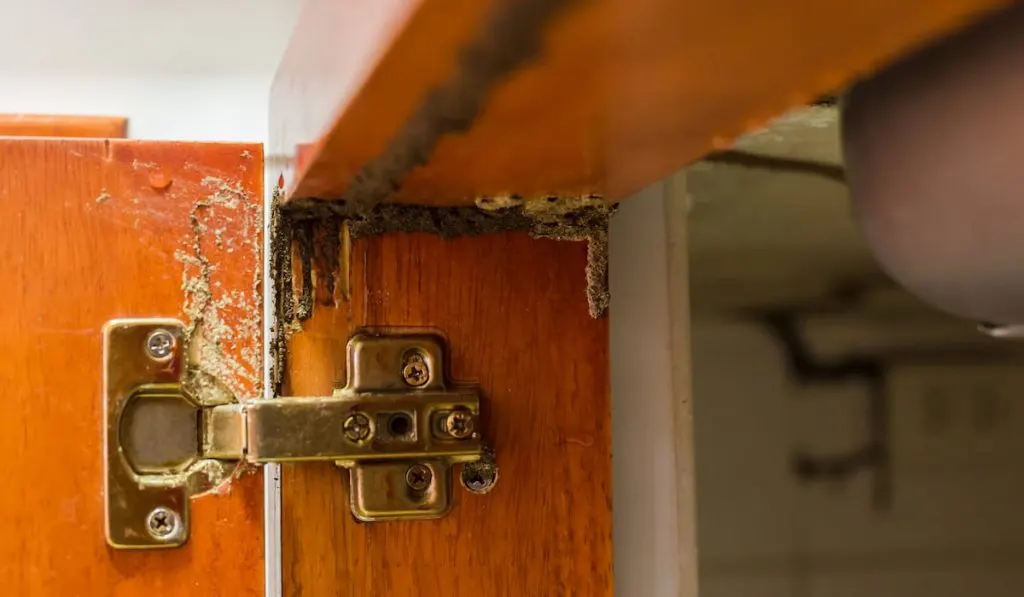
As a homeowner, you can end up with exposed wood or leaks due to poor-quality work done by builders. Over time, the leaks make the ground wet, attracting termites.
Although you may overlook the repercussions immediately, it won’t take long. That’s why experts recommend working with a qualified and experienced builder when building a home or asking around before purchasing a new home.
Poor Drainage
Modern homes are often built closely together. That’s mostly to save the contractor money, but it could also lead to a compromised property drainage system.
Building over crawlspaces can also be dangerous as any moisture that collects there could lead to mildew and mold. Over time, the support beams and wood framing will rot and attract termites.
Check water drainage systems before purchasing a new house to ensure you’re not dealing with problems later on. Avoid houses built over a crawlspace, as repairing or replacing damaged items may be more expensive.
Signs a New House Has Termite Infestation
Some of the signs of a termite infestation are:
Destroyed Garden Fence Posts, Trees, and Other Timber.
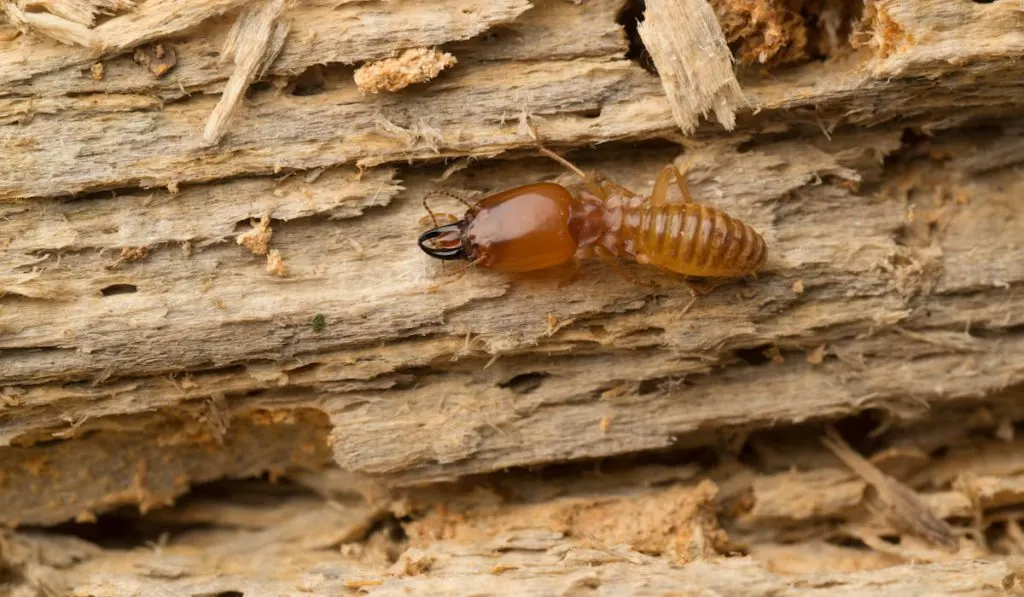
Termites gain access to a house from the outside. Items like decks, trees, fence posts, and any excess timber provide a source of food for these pests. If you notice any evidence of termite activity, you may need to act fast before these pests get inside the house.
Tunnels Leading to Your House
Termites travel through underground tunnels to search for food. You could have a termite problem if you notice mud tunnels leading to the house in the topsoil. It’s likely that these pests have invaded your property and are eating away at anything they can find.
Shelter Tubes, Wings, and Droppings
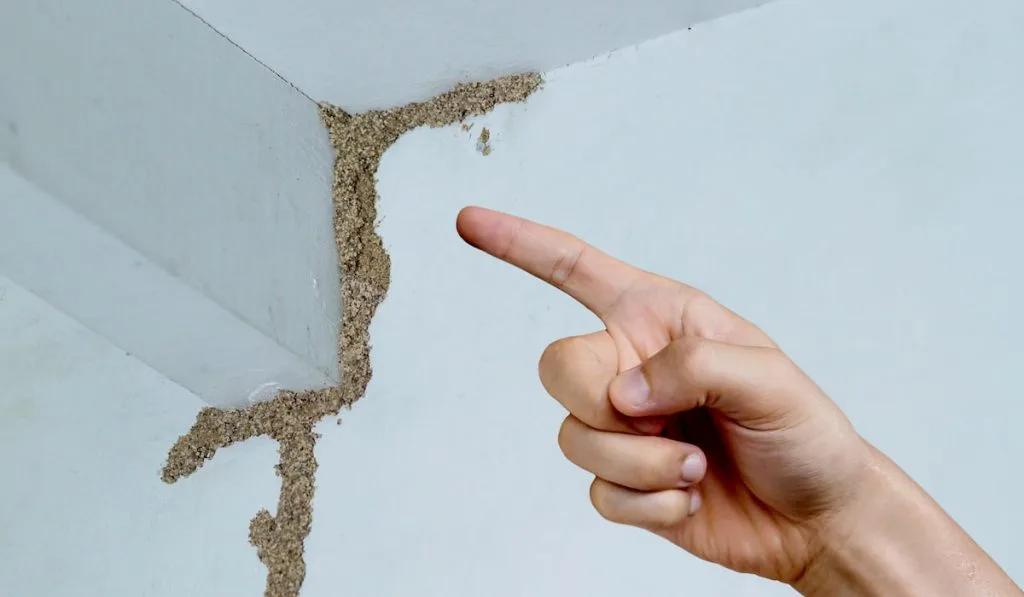
Termites love to feed on wood, and you’re likely to find subtle signs of them in your house if you already have an infestation. You’re likely to see large mud tubes over brick foundations.
These pests also shed wings after they find a mate. If you notice discarded wings around corners and windowsills, this could indicate a termite infestation. Little piles of balls are also a sign of termites around the house. Their frass matches the color of the wood and can be found anywhere in the house.
Damaged Wooden Floors
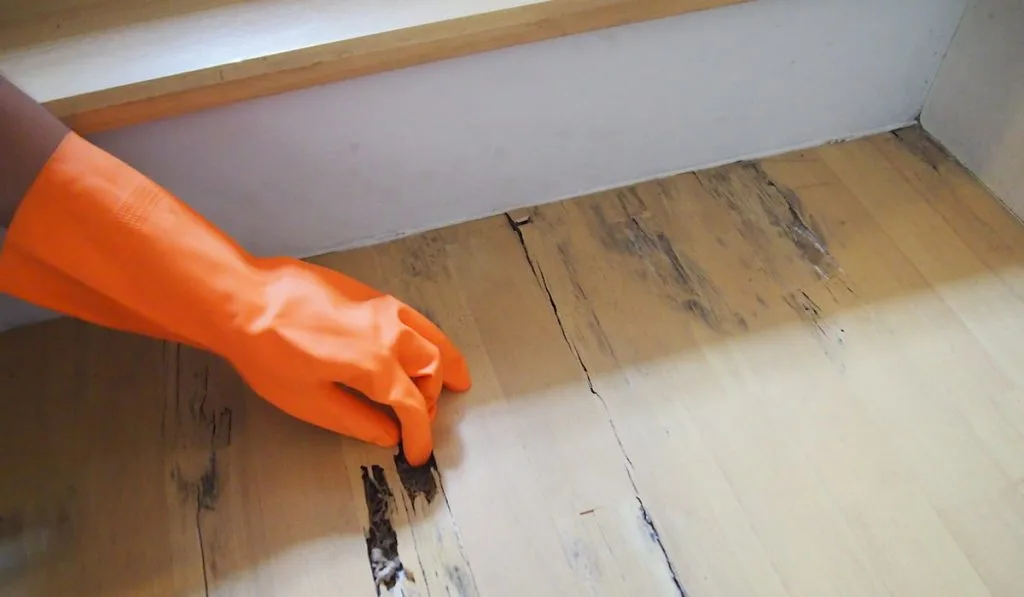
Termites find wood attractive and will eat their way through wooden floors. Some visible signs of a termite problem are cracks and holes in the floors. Decomposed timber is also another sign to look out for. You can also tell that you have a termite problem if you hear a hollow sound when you tap on the floorboards.
Wood with several layers of paper-like sheets or wood that looks thin is another indication.
Ill-fitting Windows or Doors
You may have a structural problem if one of your windows or doors is not closing properly. That could indicate a shift in the house’s foundation. While this may not necessarily be a sign of termite infestation, there’s a chance that it could be the reason behind the structural shift. It’s best to arrange a property inspection to determine if you have a termite problem.
Rattling Sounds
Although termites are silent destroyers, they can make certain noises when threatened. The sound produced sounds like a rattling noise, and you may feel like they’re scratching against a wooden surface.
Tips for Handling a Termite Infestation
While getting into a new home and discovering termites can be disappointing, you can still remedy the situation. Some of the tips to handle a termite problem are:
Get a Post-Construction Termite Treatment
An already constructed house should undergo post-construction termite treatment to protect it against termite infestation.
The treatment involves the identification of termites, drilling holes at skirting level in walls, and injecting a chemical liquid into these holes. It’s a treatment done by professional pest control companies.
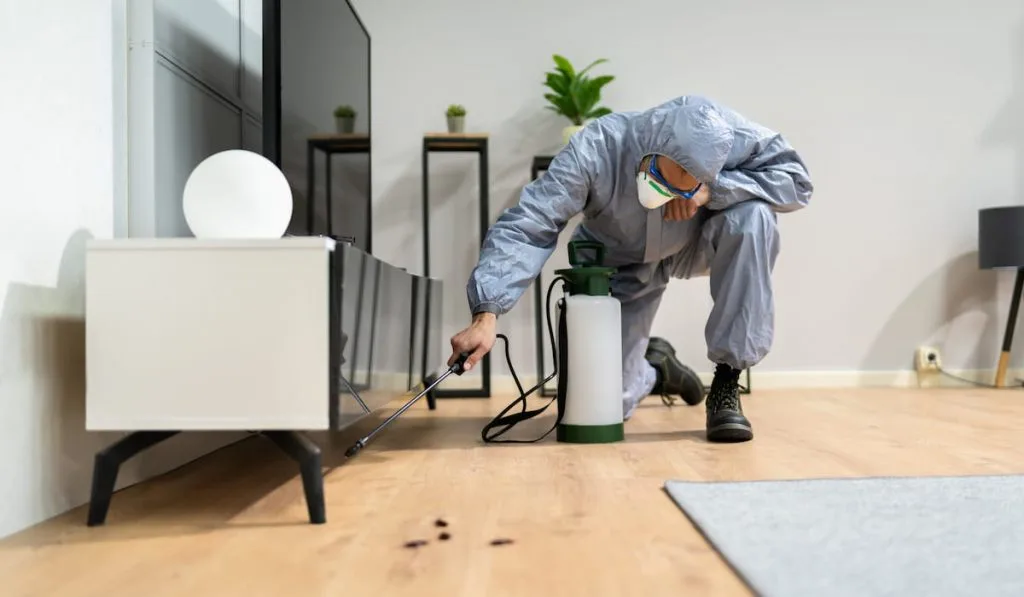
Injecting the chemical creates a barrier between the house and the soil. Any worker termites digging their way into your house will be exposed to this chemical and die.
Get Rid of any Moisture in Your House
If you’ve moved into a new house and discover a moisture problem, you need to handle it as it creates the perfect environment for termites to thrive. Check the crawlspace, repair any leaking water pipes, and divert any standing water from the house through splash blocks, gutters, or downspouts.
Keeping your house leak-free and dry can prevent the pest’s presence.
Remove any Wood Near the House
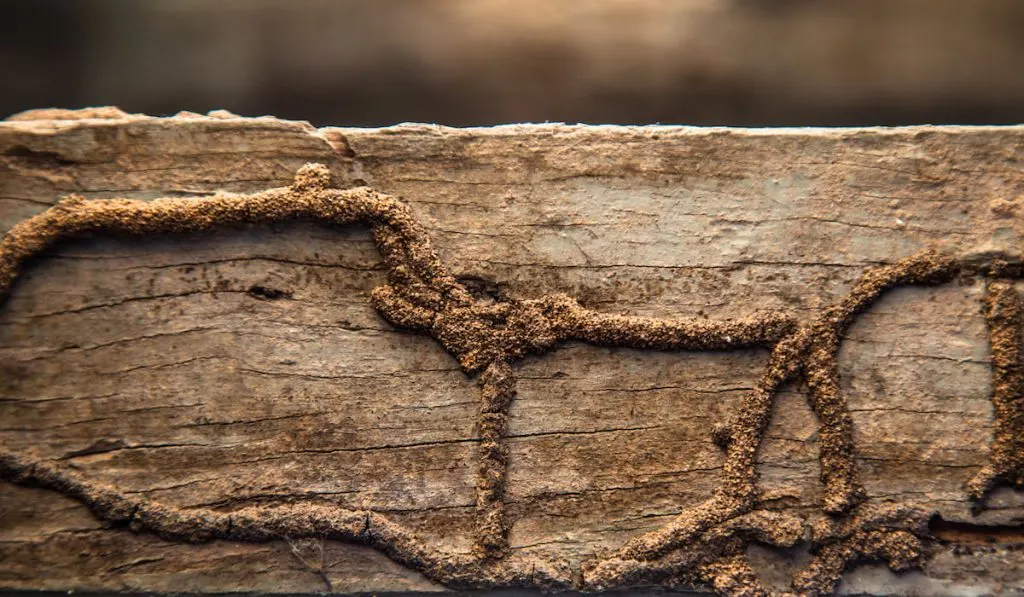
Clear any wood around your house, as this can be a starting point for termite infestation. Things like tree stumps or firewood stacks should be kept in an outdoor structure made from termite-resistant wood.
Avoid Some Yard Materials
Things like wood chips or mulch made with wood provide a food source for termites. Instead, choose organic mulch, gravel, or rubber for your yard.
Use a Termite Repellant
Spray a bottle of borate on wood before priming and painting your house. Borate acts as a termite repellant by preventing the pests from nibbling and attacking the wood.
Final Thoughts
New houses can have termites. You’ll need to call a pest control company to inspect your home and perform termite control treatment if termites have already attacked your house. A regular home inspection is essential as it can help identify termites earlier and prevent more problematic future infestations.
Resources
- https://entomology.ca.uky.edu/ef605
- https://www.architecturaldigest.com/reviews/pest-control/how-to-get-rid-of-termites
- https://proactivepestga.com/pest-control-blog/are-newer-homes-or-older-homes-more-likely-to-get-termites/
- https://actioninspections.com.au/termite-damage/https://actioninspections.com.au/termite-damage/
- https://www.cleggs.com/can-you-get-termites-in-new-home-construction/
- https://wacopest.com/termites-have-been-found-in-homes-and-buildings-only-4-days-after-construction/
- http://extension.msstate.edu/publications/what-homebuilders-need-know-about-termites
